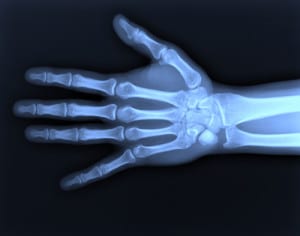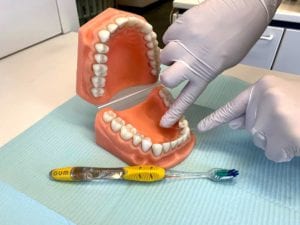
X-rays were accidentally discovered in 1895 when German physicist Wilhelm Roentgen was experimenting with electron beams in a special tube. Wilhelm placed different objects between the tube of electron beams and a fluorescent screen that started glowing whenever the beam was turned on. No matter which object he placed between the beam and the screen, the screen still glowed revealing the object. When Wilhelm decided to place his hand in front of the tube, he saw the silhouette of the bones in his hand on the screen and saw how they could hugely benefit the world of medicine.
Two types of X-rays are used to help dentists take the best care of their patients: Film and digital. Read why Sherwood Dental chooses to use digital in our blog post 10 Important Advantages of Digital X-rays.
In what ways do X-rays help a dentist?
X-rays allow your dentist to:
- See decay that may be lurking between teeth which cannot be seen by the naked eye
- See how advanced bone loss caused by periodontal disease is
- Find decay that may be happening along the edge of a crown or underneath a filling. (An X-ray is the only way your dentist can see decay beneath a filling)
- Check for an infection you may have at the tip of the root of a tooth
- View your teeth and bone to examine an area before procedures such as braces, implants and tooth removal
Have you ever wondered WHY we take X-rays? Well, now you know. Are you still wondering something about them or why we choose to use digital? Call us and ask your questions or leave a comment. You can reach Sherwood Dental at (780) 464-4166.



